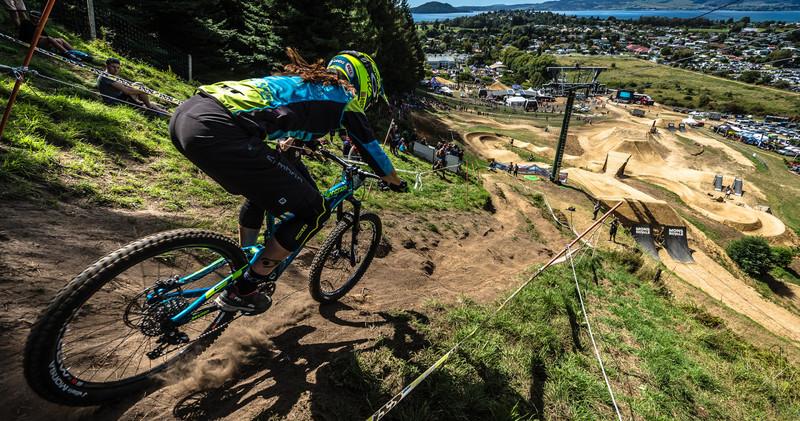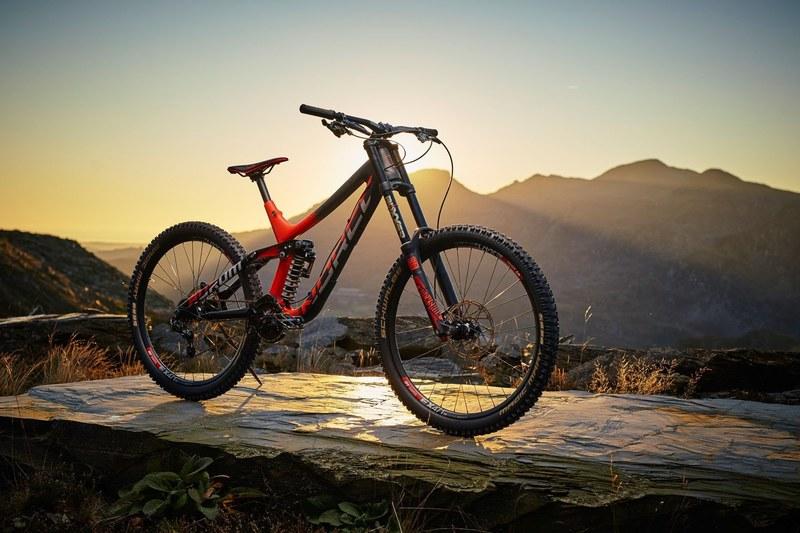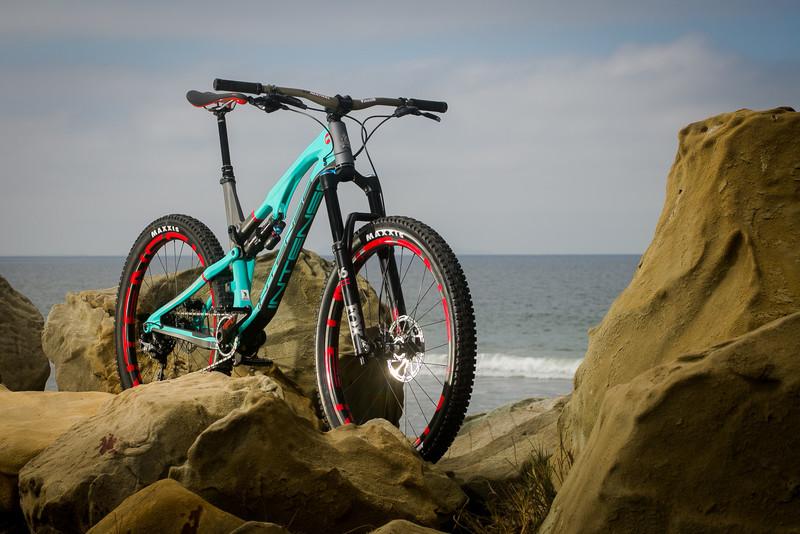|
The various categories used to define mountain bikes can be a minefield of marketing nonsense and confused customers, with one exception – the downhill bike. Instantly recognisable, brimming with technology and practically useless for 80 per cent of riders, downhill bikes are perfectly formed to attack the most aggressive, steep and fast trails that can be thrown at them. They are equipped with up to 200mm of the plushest suspension, the sharpest brakes and components capable of taking the biggest hits – quite simply, there’s no better tool if you want to get down a hill faster than your mates. Watching it all come together in the hands of a capable rider is mesmerising and the speed of the professional World Cup racers defies belief. In many ways, downhill is the purest form of mountain biking – harking back to the hippies in the Californian hills that founded the sport in the seventies. They’re not just for racing though, riding a downhill bike can also be a lot of fun. In many places such as Whistler, Canada or the Alps, people ride them on rowdy trails with big jumps where an enduro bike would leave your body battered after just a few runs. In fact, a lot of brands such as Commencal, Orange, and Transition build bike that are designed to last, as well as go fast, to appeal to this market (but are still good enough to race if you fancy it).
The only problem is, downhill bikes are useless at pretty much anything else. Up to 200mm of suspension and relaxed geometries make them a horror to pedal for extended periods of time. Taking one to your local trail centre would be a bit like driving a Formula One car through London at rush hour, so if you want to get to the top of a mountain you’re better off pushing or getting a lift. |

|
// SHOULD YOU BUY A DOWNHILL BIKE? The real question is whether you should buy one or not? An enduro bike will capably handle 90 per cent of British riding and if you only own one bike, it probably shouldn’t be downhill bikes, they’re just not versatile enough. However, if you take downhill riding and racing seriously, or want to get into it, there really isn’t another option, especially when they feel so damn fun to ride.
// HOW MUCH SHOULD YOU SPEND? Thanks to the rise of direct sales companies, this is simply not the case anymore. YT now offers its Tues AL for as little as £1,800 and the fully carbon Canyon Sender is only £2,899. With other brands offering models all the way up to 10 grand, there are downhill bikes to suit most budgets. As with most things in mountain biking it’s a world of diminishing gains as you spend more money. Improvements in damping and wheels are worthwhile, but most kit is perfectly capable on the lower end of the scale. That’s not to say you shouldn’t spend more though as some of the latest componentry still blows us away, even after twenty years of testing bikes. Here’s what to look for if you want the best descender for your money:
// FRAME Like any bike, a downhill rig lives and dies on the quality of its frame. These are developed with the help of the fastest racers in the World Cup series and have pure speed in mind. Most top end downhill frames are now at least partly carbon but some, like the Nukeproof Pulse, are still fully aluminium. The main advantages of carbon are lightness and stiffness, but it comes at a cost. The benchmark for weight is still the Mondraker Summum Carbon at 2.8kg (6.25lbs) which would translate to roughly 15kgs (33lbs) for a full build, but in all honesty weight doesn’t play as big a role in these frames as it would for an all-day trail cruiser. There’s nothing wrong with an aluminium frame though, the technology is well tested and durable – it’s been good enough for years so why change a winning formula? Instead you want to focus on the geometry. You’re looking for a bike that will be stable at speed – so generally longer and slacker is better – but bear in mind if you go too long or low then you will start to sacrifice manoeuvrability, especially in slow sections. A head angle of 62-64°, a bottom bracket height around 350mm and a wheelbase in excess of 1,250mm will be a good start. Geometry sheets can lie though and they mean nothing without the rest of the package coming together. Unfortunately, the only way to get a true feel for how a bike handles is to book on to a demo day and try out for yourself.
// SUSPENSION Forks – Most downhill bikes will use double crown forks that extend alongside the headtube. Downhill bikes need to take massive impacts so the forks are clamped in three spots to add stiffness. These forks will have around 200mm of travel, stanchions up to 40mm thick and tend to provide far plusher performance than a trail fork. Double crown forks are stiffer and more sturdy, however they will not allow you to turn your bars as much as you are used to if you’re coming from a single-crown set up. Shocks – Coil springs used to be ubiquitous in downhill but recent advancements in air shock technology have made them a viable option too. As it stands we still favour coil shocks in terms of pure performance but it can’t be denied that air shocks offer more extensive set up options and are lighter. At World Cup level Fox and Rockshox adorn the bikes of the top teams for forks and shocks but there are also capable offerings from BOS, Marzocchi, X-Fusion and more.
// WHEELS Carbon wheels are both available at downhill level but their combination of high strength and low weight means they won’t come cheap. Aluminium ones will serve a budget rider better and many years of development have left them able to take the big hits associated with the sport with a consistent feel. Downhill tyres tend to favour grip over rolling resistance so will be fatter, stronger and more aggressive than your trail tyres. Look for tyres between 2.35 and 2.5 inches. They are also heavier than you may be used to but this is a trade off for the added strength – otherwise you’d be puncturing everywhere. Different tyres offer different compounds – some are more grippy while others are more durable. There are also different tread patterns for different conditions. If you’re in the UK you’ll at least want a set of dry tyres and a set of mud tyres. |





